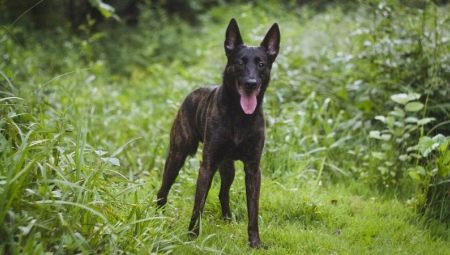Shepherd dogs are popular among owners of large houses and private territories. They are able to become a reliable defender of the territory and a loyal friend. This is true for the Dutch shepherd.
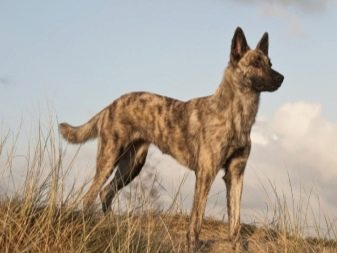
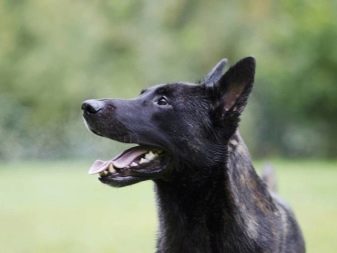
Origin history
The Dutch Shepherd, or herder, belongs to the breed of shepherd dogs. Her first appearance in the world took place in Amsterdam at a dog show in 1974. Today there are not so many Dutch shepherds, their population is quite small, and no more than 300 animals appear in a year. But still, in Holland itself they are treated with special trepidation. They are planted most often for personal purposes, and not for sale. But at the same time you can meet them not only in private courtyards, but also in the service of the police, and in the army, and in fire departments.
But some do not forget about what this breed was originally bred for, and use animals to protect livestock.
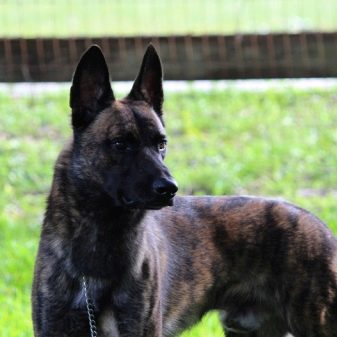

Breed characteristics
If we consider the description of the Dutch shepherd, then this is a fairly large animal. We give its standards.
- Height male dogs are usually within 60 centimeters, but females are not higher than 55 centimeters.
- Weight females 35 kilograms, and males - up to 45 kilograms.
- Head such animals are of medium size and oblong shape. It is located proportionally to the body. The back of the Dutch shepherd is quite pronounced. In addition, its frontal part very neatly passes into the muzzle. It has a slightly elongated shape and is equal to its cranial part. When viewed from the side, the head will be in line with a part of the forehead.
- Dutch shepherd dogs have a scissor bite. Their upper lip covers almost the entire lower part. The teeth have powerful fangs that can close.
- Them eyes completely small, besides widely planted; their shape is almond-shaped. They have a brown or dark brown color and a black border.
- Nose large, also black at the tip.
- The ears Dutch Shepherds have erect and triangular shapes.
- Them neck quite muscular.
- Itself body type very powerful, and the back is flat.
- Straight tail has an average length.
- Paws straight, and the fingers fit snugly together. They end with black claws.
- Wool It can be different, since such animals are divided into three types - these are long-haired, short-haired and wire-haired.
- Color Dutch shepherds can be the most diverse. They can be red, and red-brown, and silver, and tiger. However, in no case will they be monophonic.
In addition, there must be a dark mask on their face.
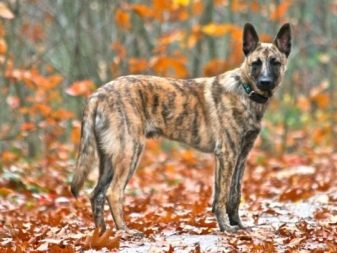
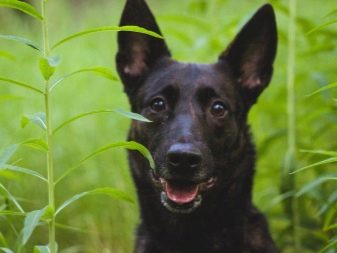
Nature and behavior
Dutch shepherds are quite freedom-loving animals, so they are absolutely not suitable for life in the city. It will be best for their health to live in nature, but at the same time it is not worth keeping them on the chain. After all, this may too negatively affect their health. If the dog still has to live in the city, then it will need a lot of physical exertion. In addition, it will often be necessary to walk the dog in the fresh air.
Herders are fairly intelligent animals, constantly in need of regular communication with people. Knowledge is given to them very easily, so they lend themselves well to training. Such dogs are considered excellent guards, because they understand what responsibility lies with them. Often, Dutch shepherds become excellent guides for blind people, however, it takes a lot of time and effort to train them.
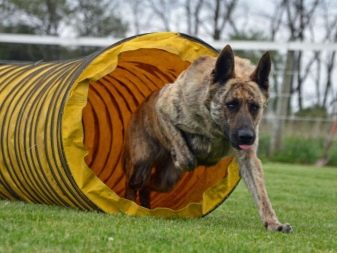
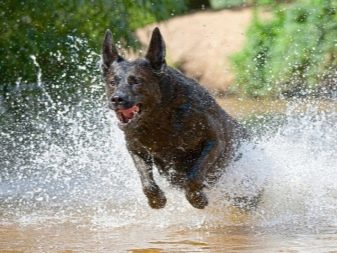
Dutch shepherds are one of the most striking successes of breeders who were engaged in their breeding. They have a pretty calm character. They practically do not show aggression, unless on completely strangers, and only if the owner allows them to do it.
If they get into a new house, then they get used to their owners for a very long time. But when the herder realizes that the person is a leader, he will become his most loyal friend. In addition, these dogs do not tolerate loneliness at all, as they are herd animals. If the leader is only one person for them, then with other inhabitants in the house they can also be friendly. But they will not listen or execute their commands.
They practically do not pay attention to small children, only after they grow up a little and can just play with such pets.
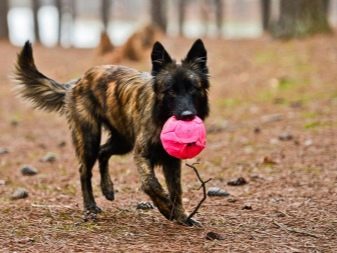
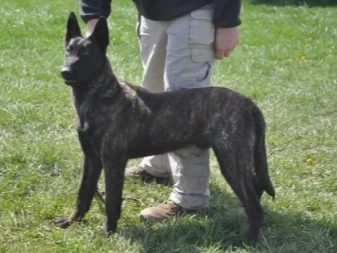
Varieties
Representatives of this breed can be divided into three conditional groups.
- Wire-haired dogs have the toughest coat. It is rather dense, because of which the animals constantly appear disheveled. In addition, they have a thick undercoat. Due to their stiff coat, it seems that their face has a thick beard and small mustache. In addition, it seems that the dog has panties. Herders can be painted blue, gray or golden. In addition, there are individuals of a tiger hue. However, the latter have a softer touch.
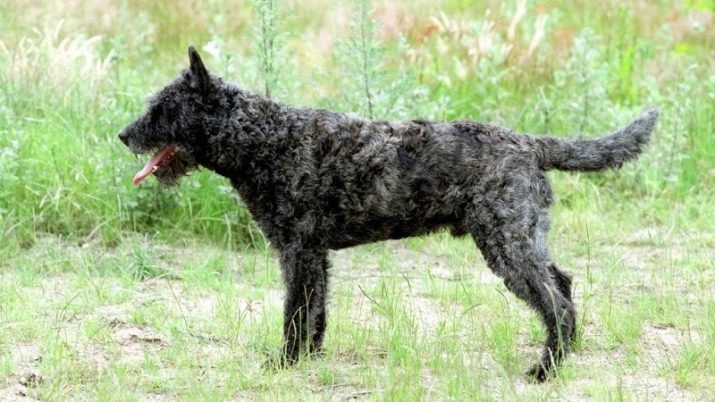
- Longhair. In such animals, the hair is also stiff, but at the same time it is long and smooth. It is longer on the head, as well as near the ears. Elongated coat and legs. The dog has a thick undercoat. The color is the same as for wire-haired dogs.
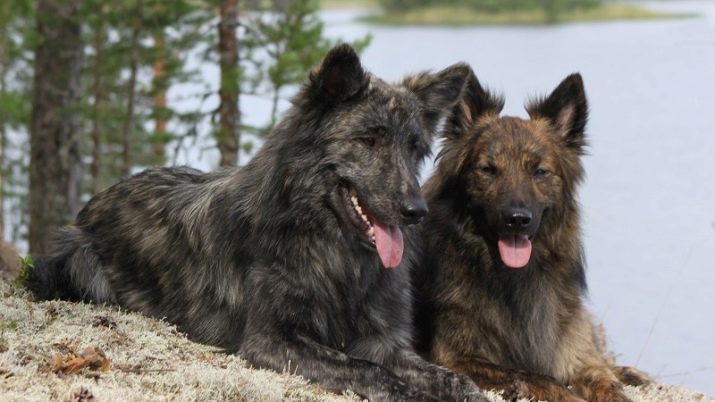
- Shorthair. Dogs of this kind have a short and stiff coat, in addition, they have a rather pronounced undercoat. As for the color, it is the same for them as for other species.

How to choose a puppy?
In the litter of one dog, 5 to 8 small puppies can be born immediately. All of them are very beautiful, and it is sometimes very difficult to choose one of them for yourself. Deciding to get yourself a little friend, you need to focus on a number of indicators.
- The puppy must have documents that confirm its pedigree. In addition, there must be a veterinary book in which vaccinations or diseases made are noted, if the animal has them.
- His parents must also have relevant documents.
- The puppy must be healthy.
- There should be no scratches on the skin.
- The dog should be active, playful and friendly.
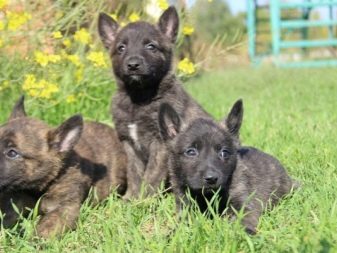

Besides, You should not buy such dogs from your hands or just from a photograph. After all, very often it happens that the puppy turns out to be an ordinary cur, and not a real herder. To avoid this, it is best to buy puppies in special nurseries or from famous breeders. The price of such puppies starts from 400-500 dollars. In addition, in order to find out in more detail the nature of the chosen puppy, you just need to turn it over on your back and press it so that it can’t get up.
If he behaves too aggressively and barks or squeaks, this will indicate that he has small deviations or problems. A good puppy will be more restrained and perceive a situation like a game.
And also we must remember that puppies of this breed are very prone to overeating. Therefore, it is imperative to ask what they fed him before.
Bringing a puppy to the house, do not immediately change his diet. Only after 7-10 days you can try to introduce other products.
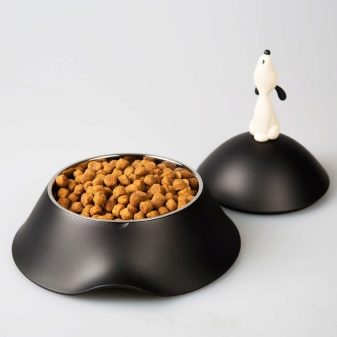
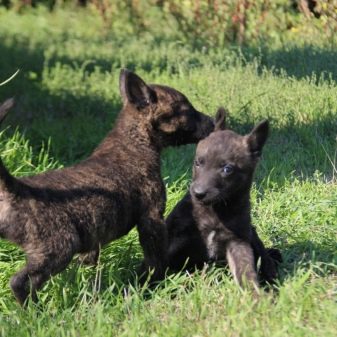
Feeding
Dutch shepherds are considered the most picky animals in food, but prone to obesity. Therefore, feed must be strictly on schedule. If there is too much food, then it will be poorly digested, and they will immediately become loose stools. The owner himself must choose the food for his pet. It can be both industrial and natural. The main thing is that the dog’s diet is balanced.
Dry food
Such feeding greatly facilitates the life of a person, since he does not need to cook. Just pour the food into a bowl, and you can do your own thing. In addition, dry feed is made for a particular breed, as well as for different ages. They include all the necessary substances that the dog needs.

Natural nutrition
Adult animals must be fed no more than twice a day. Other than that, it is best at the same time. Many people believe that such animals are predators, and therefore they need to be fed only with meat. But this is not the case. The diet should include various products:
- meat is better if it is raw;
- boiled sea fish or fresh river fish;
- offal of different animals;
- boiled eggs;
- cereals from various cereals, for example, buckwheat, rice or wheat groats;
- low-fat cottage cheese or kefir, you can also give ordinary yogurt;
- boiled or raw vegetables, for example, pumpkin or zucchini;
- bread.
In addition, you can give vitamin supplements. This is the only way the dog will get everything necessary. Little puppies need to be fed only on schedule. This should be done 3 times a day. Servings should be correctly calculated, they can be increased only when the puppy begins to grow a little. The dog should have two bowls: one for food, and the second for water, which should always be in the access zone.



Care
Herders are quite active animals, but in order to always be healthy, they will need a lot of space, as well as some physical activity. Therefore, you need to play more with your pet, be sure to take walks. If the animal lives in a country house, then the dog can walk as much, as much as he wants, but in the cities dogs must be walked no less than 4-5 hours a day.
It is forbidden to cut such dogs, but they need to be combed out. This is especially important during their molting. The comb should be stiff, able to handle their thick coat. This should be done daily so that the wool is not throughout the apartment.When the molting period is prolonged, it is necessary to consult a veterinarian, as this may be some kind of disease. Those dogs that live in the apartment, need to bathe from time to time. However, this is often not worth doing. Once a month is enough. And in spring or autumn, when the street is dirty, it’s enough for the dog to simply wipe its paws and other dirty places with a damp cloth.
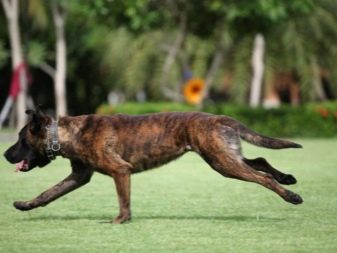
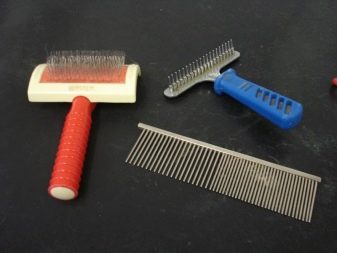
Claws should be cut very carefully, because such dogs are quite strong. This should be done once a month. It is best to entrust it to specialists who can put them to sleep for the duration of such a procedure.
You must regularly inspect the ears of your pets in order to free them, if necessary, from sulfur or ticks. And also it is necessary to brush their teeth with a special brush or give special bones that can cope with plaque no worse. The dog should receive all the necessary vaccinations on time.
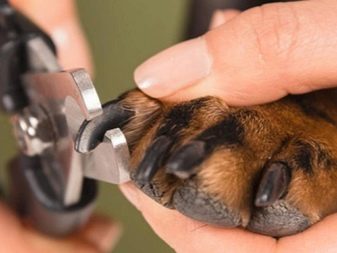

Parenting and training
Both of these processes will directly depend on the nature of the dog. Since such an animal has an almost universal character, thanks to training from it you can get not only an excellent guide, but also a guard or a wanted dog. You need to start training them from a young age. It is best to do this when he is eating or taking walks. In addition, it is necessary to contact a lot with him so that he quickly gets used to the new owner and learns to obey him. And you also need to teach him not to be afraid of other people.
First you need to teach the dog to respond to his nickname. After that, you can proceed to its further training. The animal must master commands such as “Place”, “Near”, “To me”. For example, during a walk it will be enough only once to show your pet how to recover on a walk, the second time he will do it right, right. However, everything should be done gradually so as not to overload it too much.
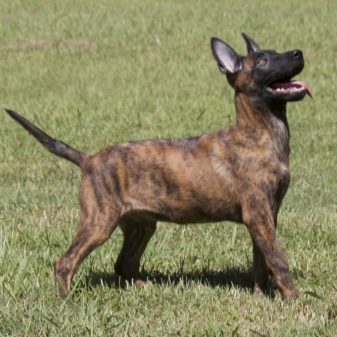

Puppies must be raised not only with affection, but also with rigor. First of all, the dog must understand who the owner of the house is, it must be subordinated to his will. You can only be punished by taking away your favorite treat from the dog. During training, he must understand that his master must listen and carry out his commands. Indeed, in the future the dog will become huge and can harm other people if it does not fulfill the necessary commands.
Summing up, we can say that the Dutch shepherd will become not only a good guard at home, but also a true friend. In addition, in any situation, she will be able to protect her master from any danger. The main thing is to provide her with proper care, and she will be able to live a long and joyful life.

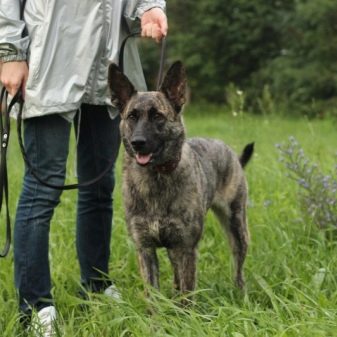
In the next video, you can take a closer look at the Dutch Shepherd.
